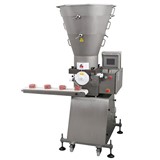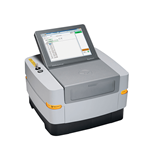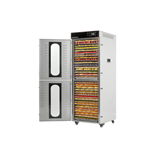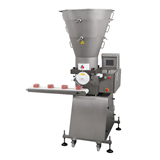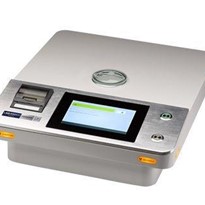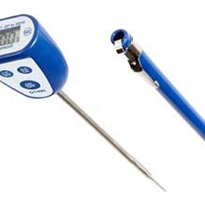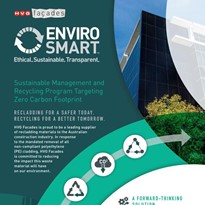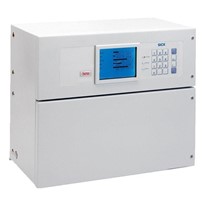World Food Safety Day, celebrated on June 7 2021, aims to draw attention and inspire action to help prevent, detect and manage foodborne risks, contributing to food security, human health, economic prosperity, agriculture, market access, tourism and sustainable development. This year’s theme of ‘Safe food for a healthy tomorrow’ stresses that production and consumption of safe food has immediate and long-term benefits for people, the planet and the economy.
For over 45 years, we at Hitachi have been manufacturing handheld and benchtop XRF (X-ray fluorescence) analyzers that help businesses around the world to comply with stringent regulations, food safety standards, nutritional parameters, and safeguard quality of food. X-ray fluorescence or XRF is an analytical technique that has been used for many years to determine the elemental composition of a wide variety of materials including food and agricultural products. XRF can typically analyze elements from sodium to uranium in concentrations ranging from parts per million to high percents, in solids, liquids, and powders.
So how can XRF analyzers help with food safety? Here’s 3 real-life examples:
Salt content in food
There are strict regulations regarding salt content in food already in place, with many governments pushing the food industry to make further reductions in salt by introducing legislation or financial penalties. Salt levels in food in the past have been measured by direct silver nitrate titration which is more suited to a laboratory environment rather than food production.
Customer Use Case: using benchtop XRF to verify salt content in food
We’ve been working with an established and popular brand that has been producing tinned foods such as soups, sauces and pastes for over 100 years. Their challenge was to find a testing method that was suitable for a food production environment, give the accuracy needed to meet salt regulations and fast enough to maintain continuous production.
Hitachi’s LAB-X benchtop XRF analyzer provided the solution. It works by detection the presence of chlorine from the salt in the food and gives an accurate reading that is converted into salt content. It’s used for testing incoming ingredients and at final inspection before the finished food is packaged into tins or jars. They also use it to decide whether a made-up sauce can be released into production.
Since using the LAB-X, this manufacturer has seen a reduction in the amount of product they’ve had to reject before shipping.
Milk Powders
More than 8 million tonnes of powdered milk are produced worldwide annually for a variety of food products, such as infant formulas, confectionaries, sports and nutrition foods. To ensure the product meets regulations, specifications and quality, the composition of the powders is tightly monitored. This is usually done in a laboratory with inductively coupled plasma spectrometry-atomic emission spectrometry (ICP-AES), involving lengthy chemical preparation stages that demand high degree of skill.
Application Note: using handheld XRF for milk powder analysis
We were provided well characterised samples by a leading food and beverage company, which we used to calibrate the X-MET8000 handheld XRF analyzer.
Some sample preparation is necessary to achieve the highest levels of accuracy and repeatability required for production control. The fine milk powder forms into a strong pellet by compression in a die using a hydraulic press (usually 4 to 6 grams sample pressed at 2-3 tons for 32mm-diameter pellets). Each pellet is simply placed in the benchtop or portable light stand for analysis.
The X-MET8000 fits perfectly into a quality control process, delivering excellent performance for the rapid determination of P, Cl, K, Ca, Mn, Fe, Cu and Zn in milk powders. There is no need for a helium purge: the analysis is simply carried out in air path, which considerably reduces analysis cost.
Potato tubers
Hidden hunger is the term given to a diet that lacks essential nutrients, causing health problems in the populations that depend on those diets. It’s a common problem in developing countries among rural populations that live on diets comprised of a single plant-based food. A programme of biofortification is trying to address this problem. Biofortification is where the density of vitamins and minerals in a crop are increased through plant breeding programmes.
Research paper: potential and application of XRF to estimate iron and zinc concentration in potato tubers
A recent example of a biofortification programme is developing potato tubers with a high zinc and iron concentration. The challenge for the researchers was how to reliably estimate the zinc and iron concentration within each crop of potatoes. As soil type, environment and the potato cultivar itself all affect the final nutrient content, many in-the-field trials are needed until the right conditions can be pin-pointed for reliable crop cultivation.
The most accurate method of measuring mineral levels in crops is with a technique called ICP-OES (inductively coupled plasma optical emission spectrometry). It’s a difficult technique that needs extensive sample preparation, uses chemicals, and needs highly skilled staff to operate the equipment. In contrast XRF can be used by anyone with minimum training, and the analysis can be carried out directly on the sample without the use of any chemicals.
The potato tuber research used Hitachi’s X-Supreme8000 benchtop XRF analyzer to analyze the iron and zinc content of biofortified potato tuber crops grown in Peru. The XRF analysis technique proved to be extremely effective and is allowing potato breeders to quickly analyze vital mineral content.
These are just three examples of how our XRF technology is making a real impact on society and we as Hitachi are powering good.
Looking to make the food you manufacture safe for today and healthy for tomorrow? Get in touch with our expert to discuss your requirements.







